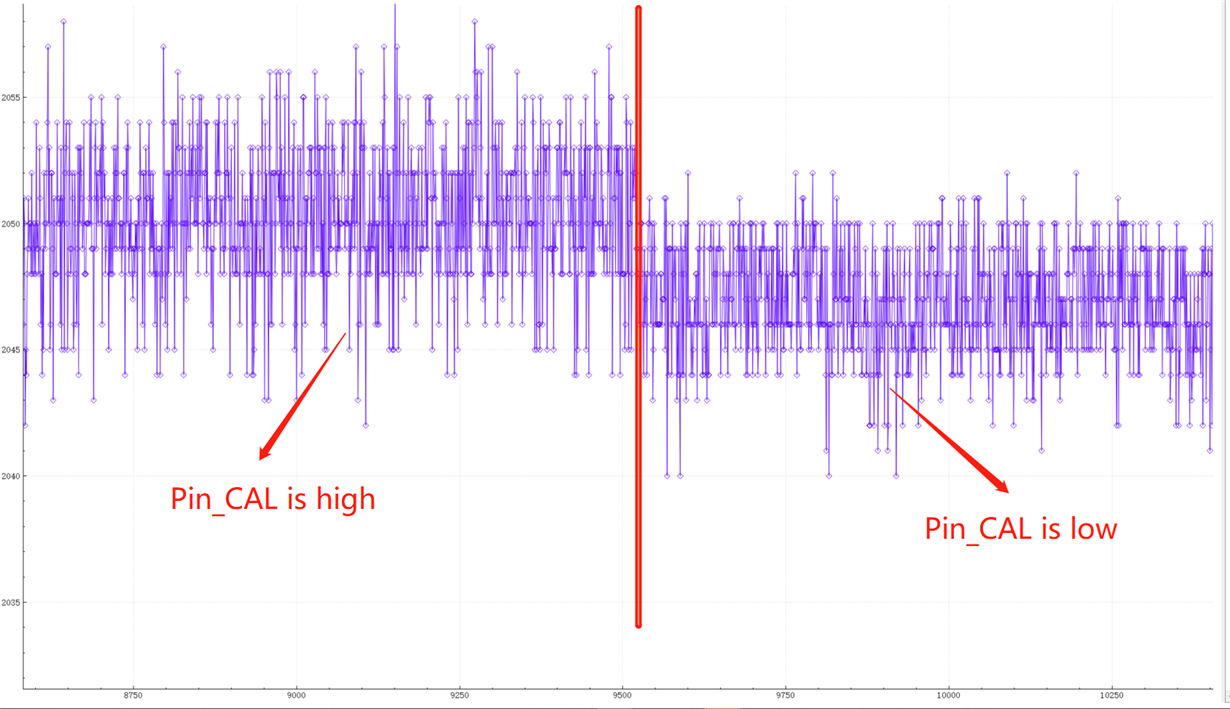Hi Adam:
I found a problem with Auto offset calibration of DRV8323,
I did a test:DRV8323 is connect to a three-phase motor , the system work in the state that the high side FETs is closed and the low side FETs is on,
pull the cal pin high to do a calibration at 2s intervals,MCU uses ADC module to sample 8323 SOx
The results show that the ADC is different for each calibration, ADC jitter on 2045 and 2065,as shown in the figure below
Green data represents the state of the cal pin, 2050 is high, 0 is low
Measured SOx with an oscilloscope, the voltage waveform is the same trend as the ADC,and the ADC reference voltage of my MCU is unchanged
I don't understand why the value of each calibration is different
I also made the following attempts, all the same phenomenon:
-Increase the time interval to 10s
-Calibration using SPI configuration
-Use the BOOSTXL-DRV8323Rx to do the same experiment
Is this phenomenon abnormal, can you explain why?
Looking forward to your reply
Thanks
ZX




